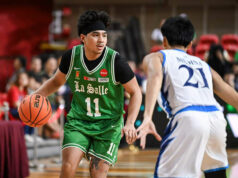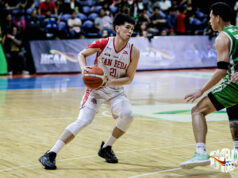When Andy Murray announced his impending retirement from tennis in early January, there was ample reason to lament the loss of a player who made significant strides on and off the court. If there was universal disappointment in his departure, it underscored the degree of respect for his competitiveness with a racket in hand and his status as an ambassador for the sport. He wasn’t perfect, but if he had fits under pressure, he directed it mostly to himself in an outward reflection of his demanding nature; he knew the extent of his talent, and lashed out demonstratively when he couldn’t translate potential to practice.
Murray would go on to compete in the Australian Open that month, but he lasted all of one round. Considering the pain he was in, he had no business burning rubber, let alone putting up a gallant five-set effort. It appeared to be a fitting valedictory for a three-time Grand Slam champion and five-time major runner-up who found his spirit willing but his flesh decidedly weak. In his post-match presser, he spoke of the possibility of going under the knife anew to address extreme pain in his hip — not to resume his career, but, really, just to improve his quality of life.
January still hadn’t turned over when Murray had his hip “resurfaced,” a surgical process involving the placement of a metal cap at the top of his femur. He didn’t know what fate awaited him, but he was in high spirits right after, perhaps cognizant of the name it shared with the birthplace of his sport and the wonders it had done to doubles specialist Bob Bryan. And he was right to be optimistic; his intense discomfort disappeared, and recovery was quick. In fact, he felt so good that he signed up for a doubles stint with Feliciano Lopez at the Queen’s Club Championships last week. He had a modest goal: subject his body to the rigors of competition and see if it could hold up.
As things turned out, Murray didn’t just survive the tournament. He won it with Lopez. Never mind that he was rusty and newly convalesced from surgery. Forget that they were in a quarter of the draw that had them facing top seeds Juan Sebastian Cabal and Robert Farah in their opener. They improved every step of the way, and, en route to the title, likewise upended third seeds Henri Kontinen and John Peers in the Round of Four and fellow finalists Rajeev Ram and Joe Salisbury. As he noted in the aftermath, “I’m happy with playing tennis and training, and having no pain anymore.”
For Murray, “happy” is exactly what he felt, and why the victory “is more special than a lot of the singles tournaments that I’ve won for a lot of different reasons.” Indeed, he played with his usual fire, but likewise freely, smiling between points and sharing light moments with Lopez. And he so enjoyed his experience that he’s continuing with doubles. Up next is an appearance in the Eastbourne International with Marcelo Melo, and then in Wimbledon with Pierre-Hughes Herbert.
Clearly, Murray’s angling for higher objectives, especially at the All England Lawn Tennis and Croquet Club. He’s bound to be a crowd darling in his favorite haunt, and in the hunt with a career Grand Slam doubles winner. The ultimate goal, to be sure, is to return to singles competition, but he isn’t in a hurry. And if he doesn’t get to do so, it won’t be any skin off his back. He’s right where he wants to be: having fun and in control of his life.
Anthony L. Cuaycong has been writing the Courtside since BusinessWorld introduced a Sports section in 1994. He is a consultant on strategic planning, operations and Human Resources management, corporate communications, and business development.



